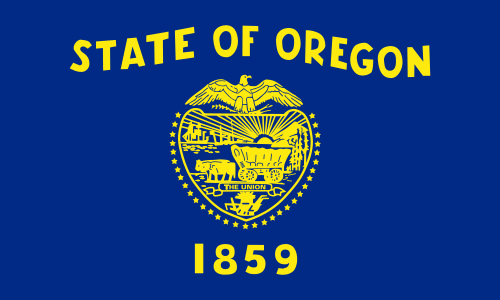Oregon Measure Nos. 310-311, Retail Sales Tax Measure (1944)
| Oregon Measure Nos. 310-311 | |
|---|---|
| Election date |
|
| Topic Taxes |
|
| Status |
|
| Type Legislatively referred state statute |
Origin |
Oregon Measure Nos. 310-311 was on the ballot as a legislatively referred state statute in Oregon on November 7, 1944. It was defeated.
A "yes" vote supported implementing a tax on retail sales of tangible property and allocating the revenue to support old-age assistance, property tax reduction, and common schools. |
A "no" vote opposed implementing a tax on retail sales of tangible property and allocating the revenue to support old-age assistance, property tax reduction, and common schools. |
Election results
|
Oregon Measure Nos. 310-311 |
||||
|---|---|---|---|---|
| Result | Votes | Percentage | ||
| Yes | 96,697 | 26.42% | ||
| 269,276 | 73.58% | |||
Text of measure
Ballot title
The ballot title for Measure Nos. 310-311 was as follows:
| “ | BILL IMPOSING TAX ON RETAIL SALES OF TANGIBLE PERSONAL PROPERTY - Purpose: To impose a privilege tax measured by gross receipts from retail sales of tangible personal property, to provide state funds for distribution, 20 per cent for age assistance, 60 per cent for property tax reduction, and 20 per cent for common school support. Empowering the state tax commission to collect the tax and providing penalties for the violation thereof. | ” |
Full Text
The full text of this measure is available here.
Path to the ballot
A simple majority vote is required during one legislative session for the Oregon State Legislature to place a state statute on the ballot. That amounts to a minimum of 31 votes in the Oregon House of Representatives and 16 votes in the Oregon State Senate, assuming no vacancies. Statutes do not require the governor's signature to be referred to the ballot.
See also
External links
Footnotes
State of Oregon Salem (capital) | |
|---|---|
| Elections |
What's on my ballot? | Elections in 2025 | How to vote | How to run for office | Ballot measures |
| Government |
Who represents me? | U.S. President | U.S. Congress | Federal courts | State executives | State legislature | State and local courts | Counties | Cities | School districts | Public policy |


